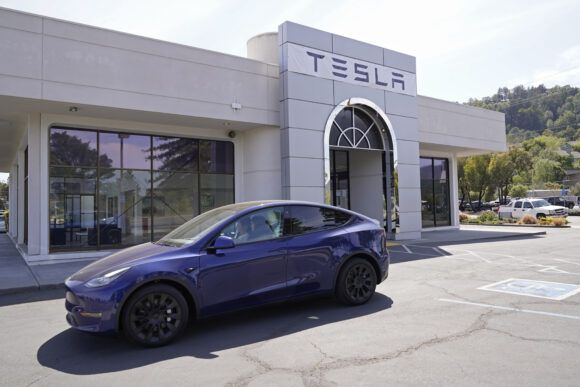High claim severities, persistent risky driving behavior, electric vehicles and shop-and-swap consumers are challenging auto insurers to stay profitable.
The challenges will continue through the end of the year and beyond, according to the 2024 U.S Auto Insurance Trends Report from LexisNexis Risk Solutions.
“Auto insurers are navigating a dynamic and challenging market environment in 2024. For their part, consumers are displaying more unpredictable driving and policy shopping behavior and increasingly switching carriers to find better rates,” said Adam Pichon, senior vice president of global analytics, insurance, LexisNexis Risk Solutions.
Persistent inflation, high claims costs and risky driving behavior contributed to an industry combined ratio of 105 in 2023, compared to 112 in 2022, as auto insurers took an aggressive approach to profitability challenges with double-digit rate increases.
“It is crucial for insurers to balance market acquisition and retention with rate adequacy and utilize data-driven insights to help manage risk and maintain profitability to be set up for continued success as the market begins to soften,” said LexisNexis.
Shopping and Swapping
Rates rose an unprecedented 14% in 2023 over 2022, driving consumers to shop and switch auto policies. New policies rose 6.2% in 2023, and retention rates dropped from 83% to 80%.
Among consumers with auto insurance at the end of 2023, 41% shopped at least once for a new policy. Overall, shopping increased 4.7% in 2023.
According to the report, a lack of a consistent renewal strategy could also threaten insurers’ new business rate competitiveness. Insurers can use predictive internal and external data and models to update renewal underwriting strategies.
Risky driving
Moving and non-moving driving violations increased 4% in 2023 compared to the year before, reported LexisNexis.
- Risky driving behavior, such as distracted driving, is prominent with Gen-Z drivers as violations increased 24% from 2022 and 66% compared to 2019.
- Distracted driving across all age demographics rose 10% from 2022-2023.
- DUI violations rose 8% in the first six months of 2023 compared to the same time frame in 2022.
- Major speeding violations (up 10% in 2023 compared to 2022 and up 36% since 2019) and minor speeding violations (up 16% from 2022 and up 15% since 2019) continue to increase.
- According to estimates by the U.S. Department of Transportation, total miles driven rose 2.2% in 2023, returning to pre-pandemic 2019 levels.
Claim Severity and Complexity Rise
Claim severity continues to challenge the insurance industry with an upward trend since the pandemic. Compared to 2020, bodily injury has risen by 20%, along with severity as material damage has increased by 47%.
In 2023, over a quarter (27%) of collision claims were deemed total losses, requiring payouts and consumers to replace a vehicle or find alternate transportation.
Another factor exacerbating a complex claims landscape is the rising bodily injury numbers and costs that can exceed the minimum coverage limits for many drivers.
The High Cost of Lawyers
Attorney involvement has contributed to the rise in claims costs. Over half (51%) of claimants who hired an attorney received a higher settlement amount. Those success rates are reflected in the fact that 93% of claimants who sought legal counsel intend to retain similar services for future incidents.
Attorneys are exploiting these numbers. Following an auto accident, 85% of claimants were approached by one attorney and 60% by more than one, LexisNexis said.
The Electric Influence
In 2023, sales of electric vehicles grew 54% compared to light-duty vehicle sales growth of 13%. The total number of EVs insured grew by 40% to 3.9 million, while the number of private passenger vehicles insured grew by only 1.2% in the same period, to 265 million.
Despite the popularity of EVs, differing driving experiences have contributed to higher and more severe claims than internal combustion engine (ICE) vehicles. In 2023, increases in claim frequency (17%) and severity (34%) were up compared to ICE counterparts.
The steady rise in insurance rates had an even more significant effect on EV insurance shopping in 2023, with 24% of new EV buyers shopping for lower rates compared to 19% of new PPA buyers who shopped for coverage last year.
Although sales began to slow in the fourth quarter of 2023, the EV segment of auto insurance is expected to thrive in the next few years, LexisNexis said, adding that auto insurers need to better understand the distinctive risk profiles of EVs and develop EV-specific rating and underwriting strategies to help capture this growth opportunity profitably.
Was this article valuable?
Here are more articles you may enjoy.


 Coming Soon to Florida: New State-Fed Program to Elevate Homes in Flood Zones
Coming Soon to Florida: New State-Fed Program to Elevate Homes in Flood Zones  AccuWeather’s 2024 White Christmas Forecast Calls for Snow in More Areas
AccuWeather’s 2024 White Christmas Forecast Calls for Snow in More Areas  Texas Accuses Allstate-Owned Arity of Data Privacy Violations
Texas Accuses Allstate-Owned Arity of Data Privacy Violations  Mississippi High Court Tells USAA to Pay up in Hurricane Katrina Bad-Faith Claim
Mississippi High Court Tells USAA to Pay up in Hurricane Katrina Bad-Faith Claim 